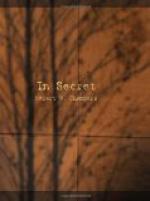On the 14th the process of infiltration began. But the Hun invasion of Les Errues was not to be conducted in force, there must be no commotion there, no stirring, no sound, only a silent, stealthy, death-hunt in that shadowy forest—a methodical, patient, thorough preparation to do murder; a swift, noiseless execution.
Also, on the 14th, the northern sky beyond the Swiss wire swarmed with Hun airplanes patrolling the border.
Not that the Great Secret could be discovered from the air; that danger had been foreseen fifty years ago, and half a century’s camouflage screened the results of steady, calculating relentless diligence.
But French or British planes might learn of the presence of these enemy agents in the dark forest of Les Errues, and might hang like hawks above it exchanging signals with them.
Therefore the northern sky swarmed with Boche aircraft—cautiously patrolling beyond the Swiss border, and only prepared to risk its violation if Allied planes first set them an example.
But for a week nothing moved in the heavens above Les Errues except an eagle. And that appeared every day, sheering the blue void above the forest, hovering majestically in circles hour after hour and then, at last, toward sundown, setting its sublime course westward, straight into the blinding disk of the declining sun.
The Hun airmen patrolling the border noticed the eagle. After a while, as no Allied plane appeared, time lagged with the Boche, and he came to look for this lone eagle which arrived always at the same hour in the sky above Les Errues, soared there hour after hour, then departed, flapping slowly westward until lost in the flames of sunset.
“As though,” remarked one Boche pilot, “the bird were a phoenix which at the close of every day renews its life from its own ashes in the flames.”
Another airman said: “It is not a Lammergeier, is it?”
“It is a Stein-Adler,” said a third.
But after a silence a fourth airman spoke, seated before the hangar and studying a wild flower, the petals of which he had been examining with the peculiar interest of a nature-student:
“For ten days I have had nothing more important to watch than that eagle which appears regularly every day above the forest of Les Errues. And I have concluded that the bird is neither a Lammergeier nor a Stein-Adler.”
“Surely,” said one young Hun, “it is a German eagle.”
“It must be,” laughed another, “because it is so methodical and exact. Those are German traits.”
The nature-student contemplated the wild blossom which he was now idly twirling between his fingers by its stem.
“It perplexes me,” he mused aloud.
The others looked at him; one said: “What perplexes you, Von Dresslin?”
“That bird.”
“The eagle?”
“The eagle which comes every day to circle above Les Errues. I, an amateur of ornithology am, perhaps, with all modesty, permitted to call myself?”




